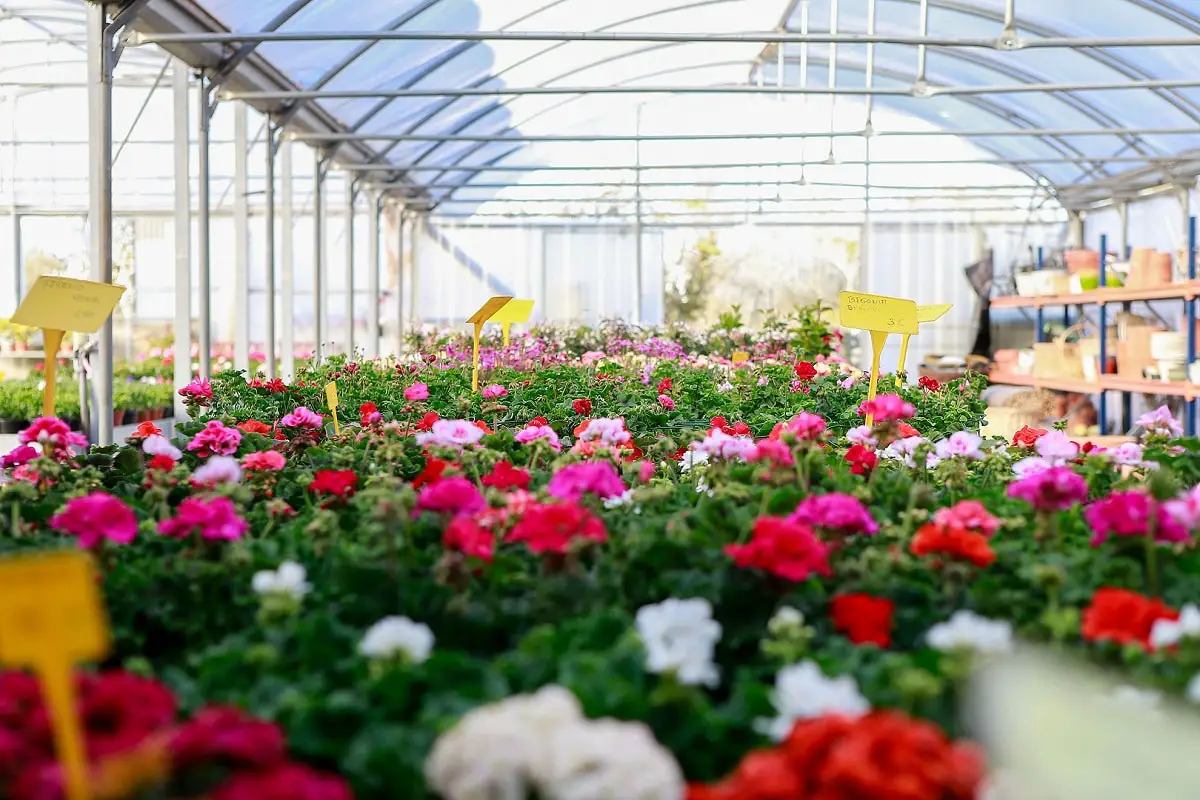

The plant nurseries They are a set of agronomic facilities where the great variety of plants and flowers that can be distributed and sold are grown. By being able to house a large number of plants and flowers that are not sold, the main function is to ensure that the species can grow properly. In addition, they must meet certain characteristics since they will have species that are not natural to the area and must grow in a controlled environment.
In this article we are going to tell you what are the main characteristics of plant nurseries and what are the requirements that they must meet.
Key features


Keep in mind that in plant nurseries there are plants that are not natural to the area. This means that it is not a plant that grows in the area where the nursery is located. If it is not controlled well, certain species of plants can be eaten have invasive plants and generate a problem in the ecosystem. For this reason, the facilities of the former are special and must be equipped to withstand certain problems. In addition, they must have the right conditions so that the plants and flowers can grow healthy for their subsequent sale and distribution.
There is a great variety of types of plant nurseries according to the use and type of species. The most normal thing is that all the nurseries share certain characteristics that vary slightly from one to the other. The area where a nursery is placed is essential to that directly or indirectly influences the quality of production. This means that a study has to be carried out first that takes into account certain aspects. Among the main variables used in a study of the location of a plant nursery, we find the type of soil, quality and quantity of water and the prevailing climate.
Another main aspect is space. Plant nurseries need a large space so that the species can develop well and without any type of competition. We know that natural ecosystems, plants have continuous competition for territories and resources. In this case, Each plant has its own space and the vast majority of them grow in pots.
Plant nursery requirements


We know that each type of plant requires certain characteristics in the soil, climate and some necessary care. However, it is used in a general way and two main aspects are taken into account: the texture and the pH of the soil. The texture is one of the most important variables since it is what determines the level of drainage that the soil has. With irrigation water, it can be stored in the ground if it does not have a texture that can filter. If the soil has hardened layers at least in the first 75 centimeters of height from the groundit can become stagnant. The vast majority of plants cannot stand waterlogging in the soil and the roots rot.
On the other hand, the pH of the soil will depend on the type of flower that you intend to grow. In any case, although they are different species, usually in the pH of the soil should be neither too acidic nor too alkaline. Plant nurseries are the fundamental element for the growth of plants and flowers. The water must also take essential care. Its pH must be neutral and contain minerals such as calcium and magnesium and no amount of chemicals such as chlorine as it affects plant growth and soil quality. As for the amount of water, it must be abundant and constant, especially in warmer seasons.
Plant nurseries can accommodate the environment in order to create optimal conditions for each species. The most normal thing is that they place the species grouped by similar requirements. An example of the distribution of plants within a nursery is by climatic zones. That is, all Tropical plants that require a high degree of temperature and humidity are located close to each other.
It is essential to know in depth all the plants that will exist in the nurseries, as well as the climatic conditions of the region and to know whether or not they will be able to get along. Otherwise, it will be necessary to create an artificial environment with the use of equipment that causes air conditioning and humidification, if necessary.
Importance of plant nurseries


Plant nurseries are very important places for the care and production of plants and flowers. Needed large number of gardening and landscaping specialists since they have a high ornamental component. The vast majority of plants sold and distributed from plant nurseries are for ornamental purposes. The specialists in gardening and landscaping must recommend you at all times where you should place the plants and what their needs are to optimize their care. They should also advise you on which plants are best for decoration and some tips for improvement.
Surely, if you have advice that they will give the best options to place your plants and that they take good care at all times. Sometimes we can find some plant nurseries that have much more sophisticated production systems. They are those that use cutting-edge technology to improve the distribution and production of plants and flowers. Let’s see what they are:
- Production systems: they are sown on substrates placed in trays of truncated pyramidal, conical or tubular alveoli. This facilitates the maintenance and transplantation of the seedlings.
- Cooling systems: they are thermal and shading screens that help with forced ventilation to regulate the temperature.
- Heating systems: They are closed systems that have pipes through which hot water passes and some hot air systems. The goal is to raise the ambient temperature of the roots.
- Irrigation systems: are those used for spraying or micro-spraying in some greenhouses. Localized irrigation systems are also used.
I hope that with this information you can learn more about plant nurseries and their characteristics.
